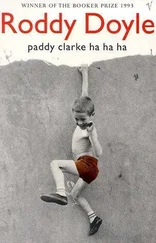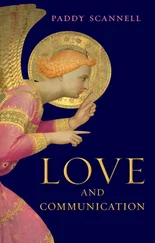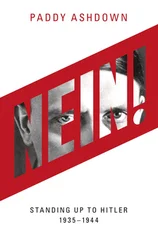Between 1924 and 1929 the German economy stabilised, thanks in large measure to US loans. A period of great artistic renaissance followed. Berlin, reverberating to the talents of Thomas Mann, Bertolt Brecht, Max Reinhardt, Marlene Dietrich and the artists and architects of the Bauhaus movement, became the cultural capital of the world.
No sooner was hope reborn than it was broken again on the wheel of a second economic crisis, this time brought about by the Wall Street crash of October 1929. By 1932, with unemployment standing at six million, those, including dependants, directly affected by loss of work amounted to 20 per cent of the German population.
Revolt was once again in the air. Running battles broke out in the streets between communists and Hitler’s stormtroopers. A German commentator on these years wrote, ‘In [these] times, principles are cheap and perfidy, calculation and fear reign supreme.’
These were perfect hothouse conditions for the growth of the most radical forms of extremism. Driven by a mystic and misshapen belief in the moral rebirth of Germany, unencumbered by doubt, unheeding of convention, fed on hate, armoured with conspiracies and slogans and led by a messianic leader who combined charisma with an astonishing ability to move the masses, the Nazi Party’s time had come. In the 1928 elections, the National Socialist Democratic Party – known by its shortened version, ‘Nazi’ – was no more than a tiny fringe party winning only 2.6 per cent of the vote. Just four years later, in July 1932, Hitler’s party secured 13.7 million votes, making it, with 37 per cent of the national vote, by far the largest party in the German Reichstag. A second national election in November of that year saw a drop in the Nazi vote. Nevertheless, after a period of parliamentary stalemate, the ageing German president Paul von Hindenburg appointed Hitler chancellor in 1933, believing that this was the best means to control him. ‘We’ve engaged him for ourselves,’ said former chancellor Franz von Papen, one of the grandest of the grandees in German politics. ‘Within two months we will have pushed Hitler so far into the corner that he’ll squeak.’
By these miscalculations the nation of Beethoven and Schiller, of Goethe and Schubert, was given over, lock, stock and barrel to the most primitive, destructive and primeval force for barbarism that Europe had seen since the Dark Ages.
While most of the elite saw Hitler as a harmless eccentric who they could control and who would not last for long, many ordinary Germans, even those who did not vote for him, believed that he might represent a new start and should be given a chance – after all, many argued, things couldn’t get worse, could they?
All of them had misjudged their man.
Adolf Hitler was remarkable in many ways. He was always thinking the unthinkable; always proposing the objectionable; always choosing to shock, rather than to comfort; always rejecting the constraints of convention; always preferring myth and mission to reality; always taking people by surprise with his undiluted radicalism; always trusting his own inner voice in preference to facts and other people’s opinions. ‘I confront everything with a tremendous ice-cold lack of bias,’ he once declared. Because a thing should be, it would be – that was Hitler’s doctrine. On the altar of this absolutism, bolstered by his much-vaunted ‘triumph of the will’, Hitler would lay waste to half of Europe.
But it was not these manic qualities which made Adolf Hitler different. What distinguished him from the many other fascist leaders of his age, and from the myriad self-declared prophets of history, was his genius for political action – he was a mythmaker with a practical understanding of power and how to use it to achieve his ends.
It was this, more than anything else, which caused friend and foe alike to look upon him with a wonder which produced adulation, fear and intrigued curiosity, depending on where you stood in relation to his power.
Foreign capitals, blindly hoping to ‘tame the beast’ who would not be tamed, proposed the usual well-tried European inducements of agreements, pacts, bribes and appeasements in the vain hope of containing the uncontainable. The whole of Europe was mesmerised – paralysed too – by what had happened in Berlin. A German observer in Paris noted among the French ‘a feeling as if a volcano has opened up in their immediate vicinity, the eruption of which may devastate their fields and cities any day. Consequently they are watching its slightest stirrings with astonishment and dread. A natural phenomenon which they are forced to confront … helplessly. Today Germany is again the great international star that appears in every newspaper, in every cinema, fascinating the masses with a mixture of fear and reluctant admiration … Germany [under Hitler] is the great, tragic, uncanny, dangerous adventurer.’
Inside Germany, it did not take long for those who disagreed with Hitler to find out that things could get worse – very much worse.
The first underground opposition to the Nazis grew out of a combination of political groupings which had stood against him in the elections – chiefly the communists and the Social Democrats.
Tainted by their association with the failures of the Weimar Republic, and in the case of the communists by their refusal to join an alliance against Hitler during the economic crises of 1930–33, Hitler’s democratic opponents were easily outmanoeuvred and broken by his ruthless pursuit of power.
Like so many others at home and abroad, Germany’s conventional parties failed to recognise the uniqueness of Hitler’s demonic nature, and presumed that his revolution was just another episode in the normal rhythms of the democratic cycle. ‘Harsh rulers don’t last long,’ said the chairman of the last great Social Democratic Party rally in Berlin in 1933.
A terrible price would soon be paid for this apathy.
On 22 March 1933, just seven weeks after Hitler became chancellor, the first concentration camp opened its gates to admit two hundred political prisoners to an old gunpowder and munitions factory which SS leader Heinrich Himmler had chosen at Dachau, sixteen kilometres from Munich. The camp, with its gates bearing the infamous legend ‘ Arbeit macht frei ’ – Work will make you free – would remain a byword for torture, every kind of inhumanity and mass extermination, until it was overrun by American troops in the last year of the war. By the end of 1933, 20,000 of Hitler’s political opponents were either in jail or doing their best to survive under the most brutal conditions in Dachau and other concentration camps, now popping up across Germany.
Despite violent anti-communist purges, which started very soon after Hitler became chancellor, communist cells began to reseed themselves in factories and workplaces. Mostly these numbered no more than six or eight people, connected by a sophisticated courier system to other cells, the identities of whose members they often did not know. These networks extended into other European countries, where they were especially active in German émigré communities. In due course, after a brief period of quiescence during the Nazi–Soviet Non-Aggression Pact, and despite being energetically pursued by Hitler’s secret state police, the Gestapo, the German communist underground network would turn to sabotaging the war effort and spying, not least through the great Russian wartime spy network which operated throughout occupied Europe, nicknamed by Himmler’s security structures die Rote Kapelle (the Red Orchestra). *
What was left of Hitler’s political opposition went underground. Among the German resistance’s early supporters were numerous activists in the social democrat cause and many in the trade union movement.
Читать дальше












